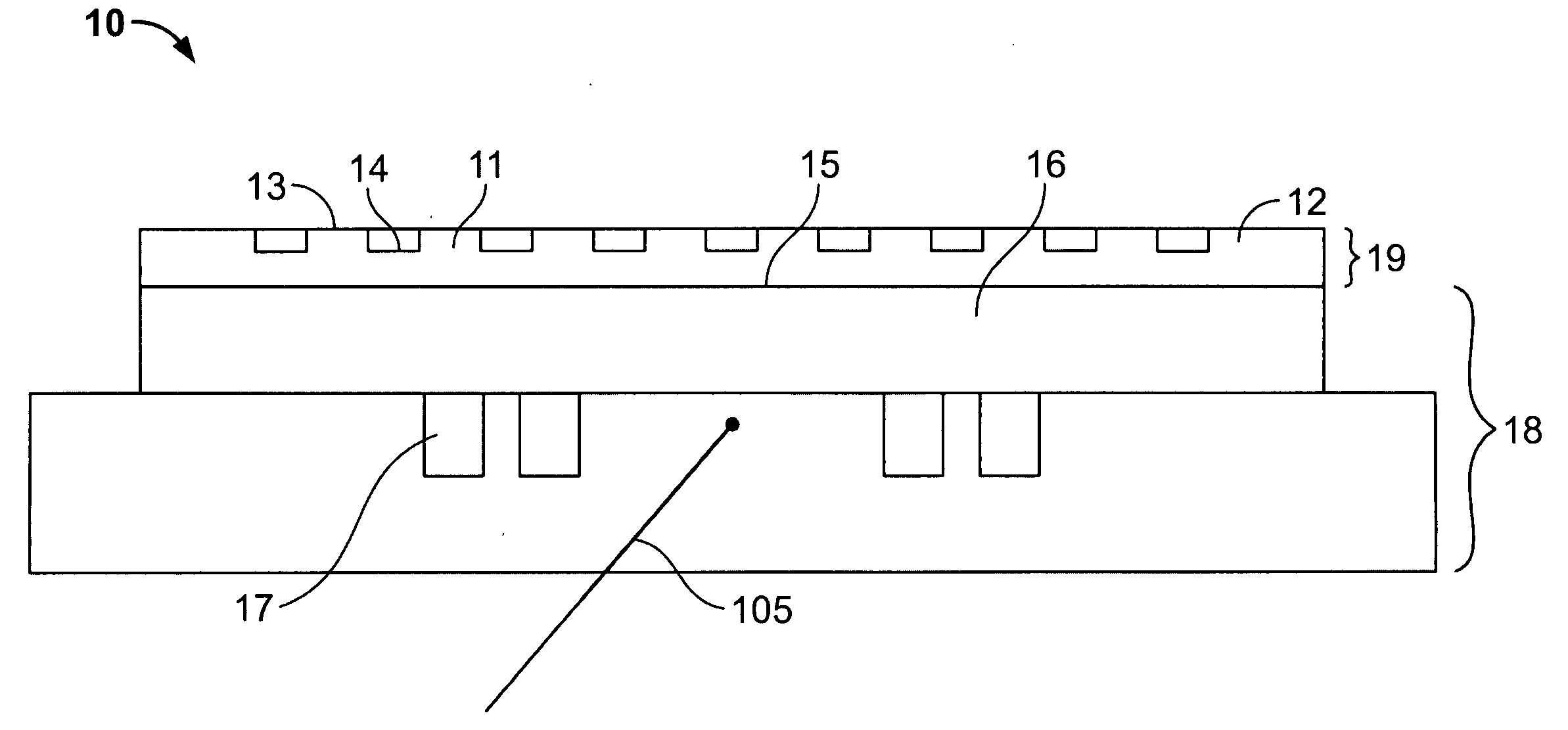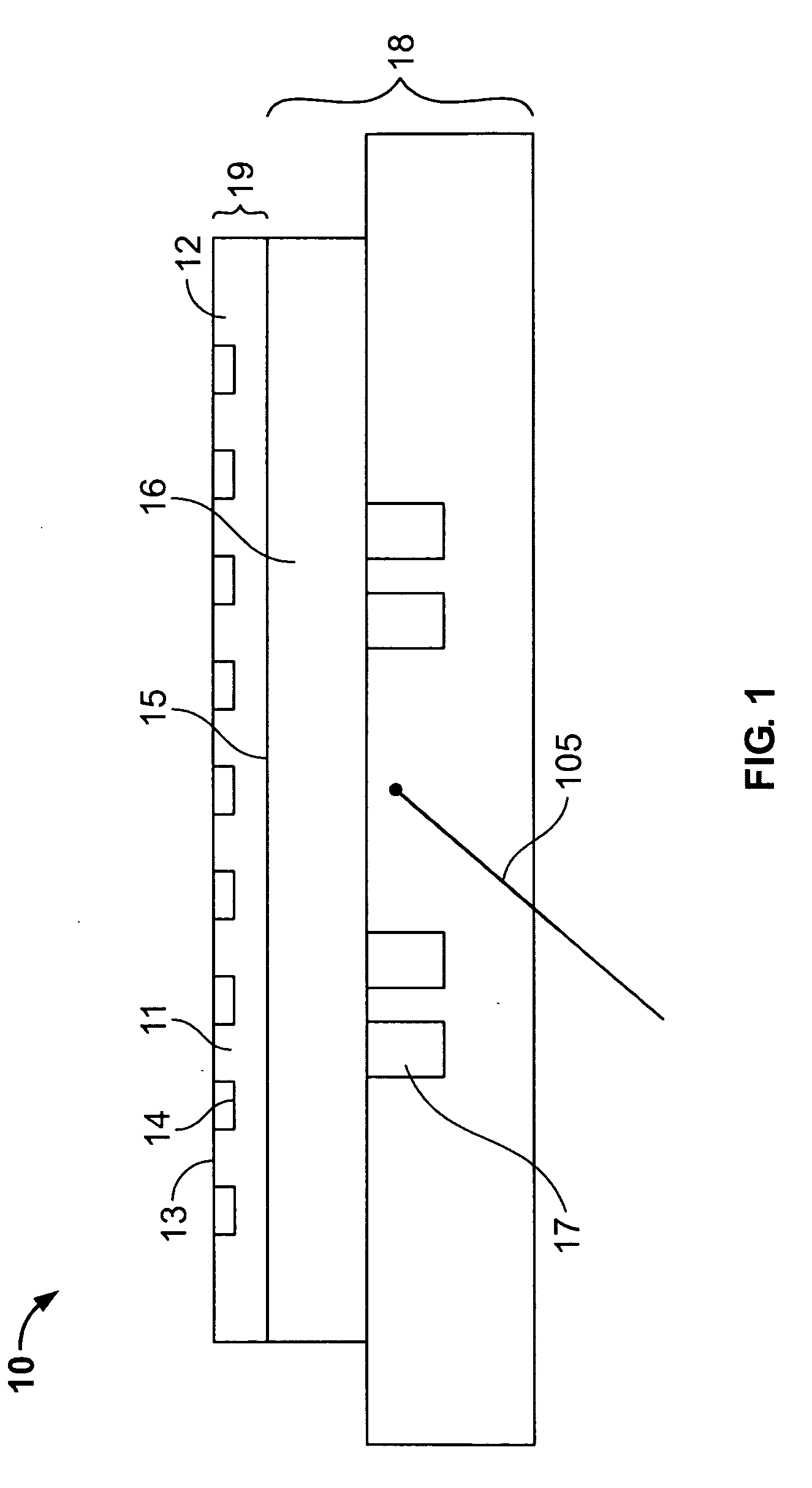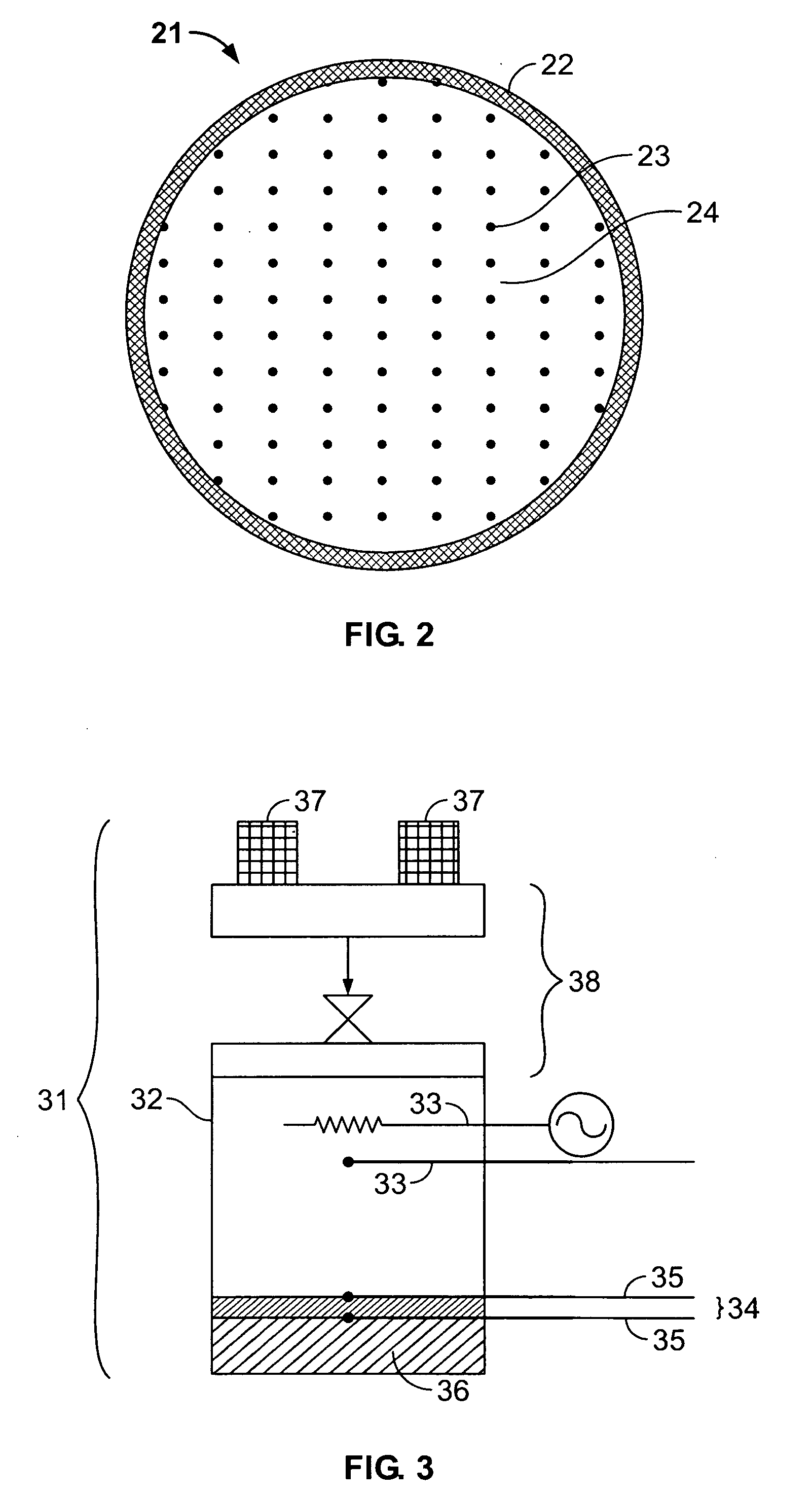Method of determining a target mesa configuration of an electrostatic chuck
a technology of electrostatic chuck and target mesa, which is applied in the direction of instruments, material heat development, heat measurement, etc., can solve the problems of unfavorable process variations within a wafer, and achieve the effect of smoothing the transition between regions of different heights
- Summary
- Abstract
- Description
- Claims
- Application Information
AI Technical Summary
Benefits of technology
Problems solved by technology
Method used
Image
Examples
example 1
[0015]During normal plasma processing, such as plasma etching, the plasma acts to heat the wafer. The temperature fluctuation of the wafer is therefore a function of heat flow out of the wafer. According to the theory of heat flow, heat transfer can occur in three ways: conduction, convection and emission of radiation. For the following assessment, emission of radiation is neglected. A heat transfer coefficient K is defined as a heat flow per unit of temperature difference between two bodies. K of a wafer on a chuck with mesas can be determined by considering the high and low areas as two cases: 1) the heat transfer that occurs over a low area, and 2) the heat transfer that occurs over a high area (mesa). In the case of the low area, the heat transfer occurs through a mechanism of energy transfer from the wafer at the higher temperature to the gas, and from the gas to the ceramic layer. Even though the gas may be in the free molecular flow regime (mean free path much greater than th...
example 2
[0041]This example is for the initial fabrication of mesas, where initial capacitance measurements are made before mesas have been fabricated, i.e. when the surface of the insulating layer is planar. Mesas are fabricated by removing material from the area where there are no mesas. Areas which become mesa areas remain untouched, and provide the high area upon which the wafer is supported. A determination of depth is developed in accordance with a procedure in which the Mesa Areal Density is known (provided by the above discussion), and mesas are going to be, but have not yet been, fabricated at a certain height. Assuming that the mesa area is small compared to Ap, we write a capacitance equation which relates only to the low areas. Using notation Cg for the capacitance due to the gap (the area that will be between the mesas when they are formed), and Ci for the capacitance of the insulating layer below the gap, then the target capacitance CT (i.e. the capacitance of the area between ...
example 3
[0052]In the case where the mesas already exist on the chuck, an adjustment of mesa height to achieve a desired capacitance profile may be needed. In one embodiment, CT is chosen so that the target capacitance profile is uniform across the chuck. In order to achieve a final uniform capacitance most efficiently it is useful to determine the relationship between material removal and capacitance. From Eqn. 6, above, the capacitance due to the low area is given by ∈oAp / (dg+di / ∈i). Since the sum of di and dg is a constant, the capacitance can be rewritten as ∈i∈oAp / [dg (∈l−1)+h], where h=di+dg. For dielectric materials, ∈i is greater than 1, so ∈i−1 is positive. Thus it can be seen that an increase in the gap depth will result in a decrease in the capacitance. Thus in the preferred embodiment, where material is only removed, capacitance can only be reduced. The selection of CT in this case, therefore, is preferably equal to or less than the lowest measured capacitance from all selected s...
PUM
| Property | Measurement | Unit |
|---|---|---|
| Length | aaaaa | aaaaa |
| Length | aaaaa | aaaaa |
| Thickness | aaaaa | aaaaa |
Abstract
Description
Claims
Application Information
 Login to View More
Login to View More - R&D
- Intellectual Property
- Life Sciences
- Materials
- Tech Scout
- Unparalleled Data Quality
- Higher Quality Content
- 60% Fewer Hallucinations
Browse by: Latest US Patents, China's latest patents, Technical Efficacy Thesaurus, Application Domain, Technology Topic, Popular Technical Reports.
© 2025 PatSnap. All rights reserved.Legal|Privacy policy|Modern Slavery Act Transparency Statement|Sitemap|About US| Contact US: help@patsnap.com



